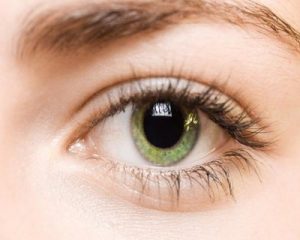- Home
- Editorial
- News
- Practice Guidelines
- Anesthesiology Guidelines
- Cancer Guidelines
- Cardiac Sciences Guidelines
- Critical Care Guidelines
- Dentistry Guidelines
- Dermatology Guidelines
- Diabetes and Endo Guidelines
- Diagnostics Guidelines
- ENT Guidelines
- Featured Practice Guidelines
- Gastroenterology Guidelines
- Geriatrics Guidelines
- Medicine Guidelines
- Nephrology Guidelines
- Neurosciences Guidelines
- Obs and Gynae Guidelines
- Ophthalmology Guidelines
- Orthopaedics Guidelines
- Paediatrics Guidelines
- Psychiatry Guidelines
- Pulmonology Guidelines
- Radiology Guidelines
- Surgery Guidelines
- Urology Guidelines
Type 2 diabetes, sleep apnea patients could lose eyesight within four years: American Journal of Respiratory and Critical Care Medicine

Research led by the University of Birmingham has discovered that patients who suffer from both Type 2 diabetes and obstructive sleep apnea are at greater risk of developing a condition that leads to blindness within an average period of less than four years.
Obstructive sleep apnea (OSA) is a condition where the walls of the throat relax and narrow during sleep, resulting in snoring and interrupting breathing, and it is common in patients with Type 2 diabetes. Meanwhile, diabetic retinopathy -the most common form of diabetic eye disease -- affects between 40 and 50 per cent of patients with diabetes and is a leading cause of blindness in the Western world.
Previous studies have shown a link between OSA and diabetic retinopathy. However, prior to this research led by the University of Birmingham, published in American Journal of Respiratory and Critical Care Medicine, there had been no published studies assessing the impact of OSA on the progression of diabetic retinopathy in patients with Type 2 diabetes.
Corresponding Author Doctor Abd Tahrani, of the University of Birmingham's Institute of Metabolism and Systems Research, said: "Despite improvements in glucose, blood pressure and lipid levels, diabetic retinopathy remains very common.
"Meanwhile, OSA has been shown to be very common in patients with Type 2 diabetes, which is not surprising considering that excess weight contributes to the development of both of these conditions.
"However, most patients who have OSA are not aware that they have the condition and the disease could go undiagnosed for years.
"Our study is the first to prospectively examine the impact of OSA on diabetic retinopathy.
"Firstly, we showed that sight-threatening diabetic retinopathy was more common in patients with both Type 2 diabetes and OSA compared to those with Type 2 diabetes but without OSA.
"However, more importantly, we have shown that patients with OSA and Type 2 diabetes, compared to those with diabetes only, are at increased risk of developing advanced diabetic retinopathy over a period of three years and seven months."
The study was carried out at two diabetes clinics at hospitals in the Midlands and involved 230 patients with Type 2 diabetes.
The study excluded any patients who were already known to have OSA or any kind of respiratory condition.
The patients were assessed for diabetic retinopathy using specialist retinal imaging, while OSA was assessed using a home-based, multi-channel cardio-respiratory portable device.
The results showed that diabetic retinopathy prevalence was higher in patients with OSA (42.9%) compared to those without OSA (24.1%).
The longitudinal study found that at a follow-up appointment, on average 43 months later, the patients with OSA (18.4%) were more likely to develop moderate to severe diabetic retinopathy compared to those without OSA (6.1%).
Meanwhile, the study also showed that patients who received treatment for OSA using a machine connected to a face mask that delivers pressure to prevent the blockage of the airways during sleep had a lower risk of developing advanced diabetic retinopathy compared to patients who did not receive the treatment.
Dr Tahrani added: "We can conclude from this study that OSA is an independent predictor for the progression to moderate or severe diabetic retinopathy in patients with Type 2 diabetes.
"Our findings are important because improved understanding of the pathogenesis of diabetic retinopathy is important in order to identify new treatments.
"Following our research, it is important that clinicians treating patients with Type 2 diabetes are aware that their patients who also have OSA are particularly at increased risk of developing advance retinopathy and, hence, appropriate preventative measures should be put in place.
"Clinicians should consider testing patients for OSA as OSA is very common in patients with Type 2 diabetes."

Disclaimer: This site is primarily intended for healthcare professionals. Any content/information on this website does not replace the advice of medical and/or health professionals and should not be construed as medical/diagnostic advice/endorsement or prescription. Use of this site is subject to our terms of use, privacy policy, advertisement policy. © 2020 Minerva Medical Treatment Pvt Ltd